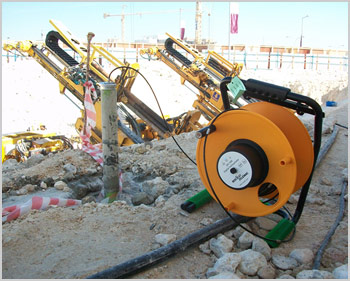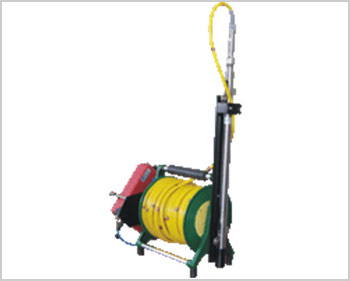The purpose of inclinometer monitoring is to observe and monitor any lateral movements within structures or strata and analyze whether remedial works are required to subdue any such movements. Applications for vertical inclinometers include:
- Monitoring slopes and landslides to detect zones of movement and establish whether movement is constant, accelerating, or responding to remedial measures.
- Monitoring diaphragm walls and sheet piles to check that deflections are within design limits; that struts and anchors are performing as expected, and that adjacent buildings are not affected by ground movements.
- Monitoring dams, dam abutments, and upstream slopes for movement during and after impoundment.
- Monitoring the effects of tunneling operations to ensure that adjacent structures are not damaged by ground movements.
There are two types of inclinometers available, which are:-
- Portable Inclinometer Probe
The portable inclinometer is more robust and can be moved from one monitoring point to another. The concept lies in lowering a probe into a pre-installed casing pipe, in the ground, pile, shoring wall, or any other structure that is being monitored to periodically check for lateral movements of the structures. The readings are compared to previous initial readings in order to assess the lateral movement and its extent. AHAM currently uses two portable probes designed by Roctest and Encardio-Rite.
|
 |
| |
 |
| |
- In place Inclinometer Probe
The in-place inclinometers are installed in location where real-time and constant monitoring is required. As the name of the system implies, it is installed in one-place only and continuously monitors the lateral movement of that location. The system comprises of access rods connecting several in-place inclinometer probes connected to a data acquisition system and the ground.
|
 |
| |
|
|